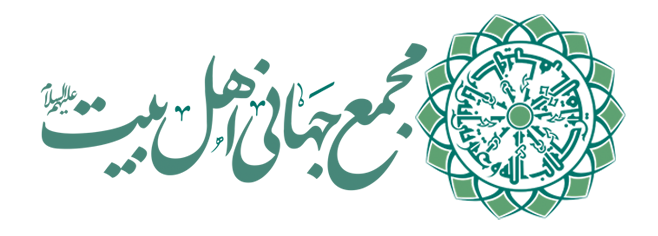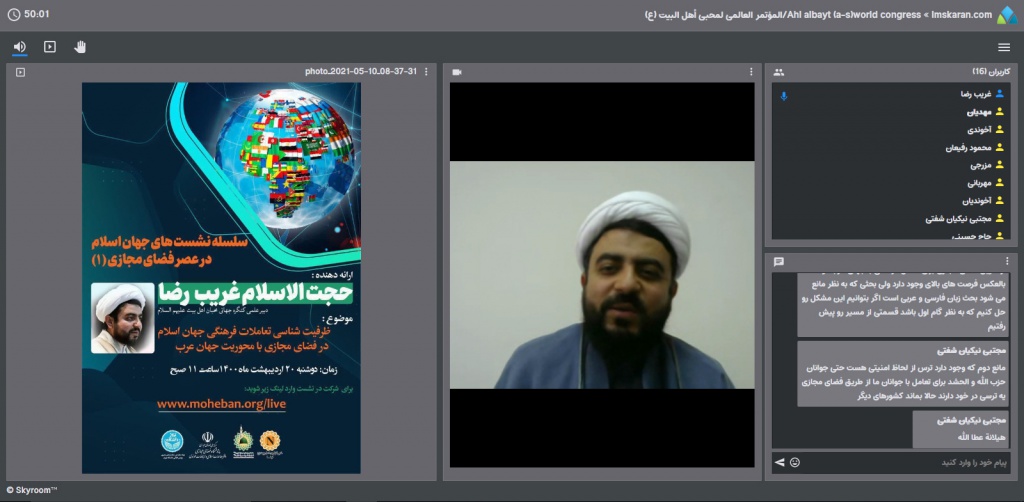Webinar on “Capacity Studies of Cultural Interactions of Islamic World in Cyberspace”
The webinar “Capacity Studies of Cultural Interactions of the Islamic World in Cyberspace with a Focus on the Arab World” was held with the presence of Hojat al-Islam Gharib Reza.
The first meeting of the series of scientific meetings of the Islamic world in the era of cyberspace with the topic “Capacity Studies of cultural interactions of the Islamic world in cyberspace with a focus on the Arab world” was held with the presence of Hojat al-Islam Gharib Reza, by the initiation of International Unit of the Office of Islamic Studies in Cyberspace, in collaboration with the Worldwide Conference on Lovers of AhlulBayt (a.s.), the AhlulBayt (a.s.) News Agency, and the Representation of the Supreme Leader on Farabi Campus - University of Tehran.
At the beginning of the meeting, the scientific secretary of the Worldwide Conference on Lovers of AhlulBayt (a.s.) said that one of the problems in the field of cultural relations between Iran and the Arab world is the lack of a proper cultural bridge between the two. He said that the solution to the problem is to create an organization to train experts to promote the discourse, change the thinking, mentality, and spiritual interests of Arab users.
He added that in the field of cyberspace, people who have three characteristics are needed:
1. A person who is a religious preacher;
2. Someone who is considered a desirable intellectual element;
3. Someone who has the skills to use cyberspace.
Following in the meeting, Hojat al-Islam Gharib Reza examined the civilization capacity of the Arab world and pointed to two periods of Islamic movements of the past:
1. Self-return movement: One of the leaders of this movement is Sayed Jamaluddin Asadabadi. He worked hard to make Muslims aware of their inner capacities, and to use them for growth and development.
2. Contemporary Islamic movements: In addition to the characteristic of returning to themselves, and relying on the capacities of Islamic education, these movements have also taken steps towards political structuring. For example, we can mention the leadership of the Muslim Brotherhood and Hizb ut-Tahrir to achieve these goals.
Citing an article by the Supreme Leader of the Revolution, Gharib Reza pointed to the high capacity of civilization in the Arab world and said, “The Supreme Leader in his book “Sharh Esm” writes, “I used the book of Malik Ibn Nabi to write the Islamic Manifesto of Government and Civilization.” This means that he, after reading Malik ibn Nabi”s book in full, used the capacity of this book, and then explained the 5 steps to explain Islamic civilization. Of course, it must be said that the field experience of the Supreme Leader, during and after the revolution, played an important role in explaining the structure of Islamic civilization.”
Gharib Reza, head of the Institute for Religious Dialogue for Unity, attributes the rejection of the Islamic Revolution by the Arab world to two factors:
3. Sensitivity of the people of the region to “Export of Revolution”: The emphasis of some people on the need for “exporting the revolution” has aroused the sensitivity of some people in the region, and made them feel that the Islamic Republic is seeking cultural and religious domination over the Arab world. However, the Supreme Leader of the Revolution has emphasized, “We issued the revolution with the 1979 revolution itself, and the revolutionary movement of Imam Khomeini was the best way to export the revolution.”
4. Lack of properly explaining the history, characters, damage, and intellectual foundations of the Islamic Revolution to Arabs living in the region: If these issues are properly explained to the audience, they will definitely accept it better. For example, we can refer to the translation of the books of the Holy Defense (Iraq-Iran imposed war) into Arabic to explain the character of the martyrs, the Holy Defense, and the original Islamic values for the audiences of Iraq and Lebanon. These translations have influenced the new generation of Iraqi and Lebanese youth. So much so that even the families of those killed in the Iran-Iraq war have become interested in this material. Measures in this area have been limited.
Finally, assessing the potential of the Arab world to create discourse and stream, he made six points:
1. Common Islamic occasions among Muslims, such as Hajj, Arbaeen, and the publication of books related to the Imams (a.s.) on the anniversary of the birth or martyrdom of the Imams (a.s.). These occasions are the best platform for the exchange of common knowledge between different Islamic denominations. Of course, it should be noted that in expressing knowledge, the specific expression of Shiite-specific content should be avoided. Because it causes stance and rejection. Expressing commonalities, which are many, is the best way;
2. Sunni Sufism; Unfortunately, this issue has been neglected so far. The reason for the importance of this issue is their mystical-political aspect. Those who were present in Tunisia and Libya, in addition to the mystical method, also made politics a part of their lives and plans. Muslim’s negligence of this sect led Western politicians in the contemporary world to exploit Muslim neglect of politics to create Wahhabism and ISIL in the political arena. While Shiites and Sufis have a close relationship with each other and it was possible to use this capacity favorably. The important point to note here is that the Shiite view of Sufi scholars such as Ibn Arabi must be corrected. Many of Ibn Arabi’s followers have become Shiites by correctly explaining his beliefs. This is a good capacity for making a stream. Because all Sufi activists have websites, pages and are active in the social network;
3. The capacity of Mustabserin (those who have recently converted to Shia); Unfortunately, by neglecting the enlightenment and correct explanation of the Imamiyyah Shia beliefs, people who have recently converted to Shia have tended to deviant Shia currents such as Al-Lahiari and Shirazi;
4. Political currents; Like the supporters of former Egyptian President Gamal Abdel Nasser, and the Muslim communists who have a communist view in their political and economic struggle but are committed to prayer and fasting. This stream can also be used favorably;
5. Religious modernism (religious liberalism); Of course, we must be careful not to cross our religious red lines. There are books on the critique of pluralism, hermeneutics, and the historicity of religion that provide a good platform for expressing Shiite views and educating Arabic-speaking audiences;
6. The capacity of public culture. This capacity does not arouse any religious sensitivities. These include the use of art in music, filmmaking, and cooking.
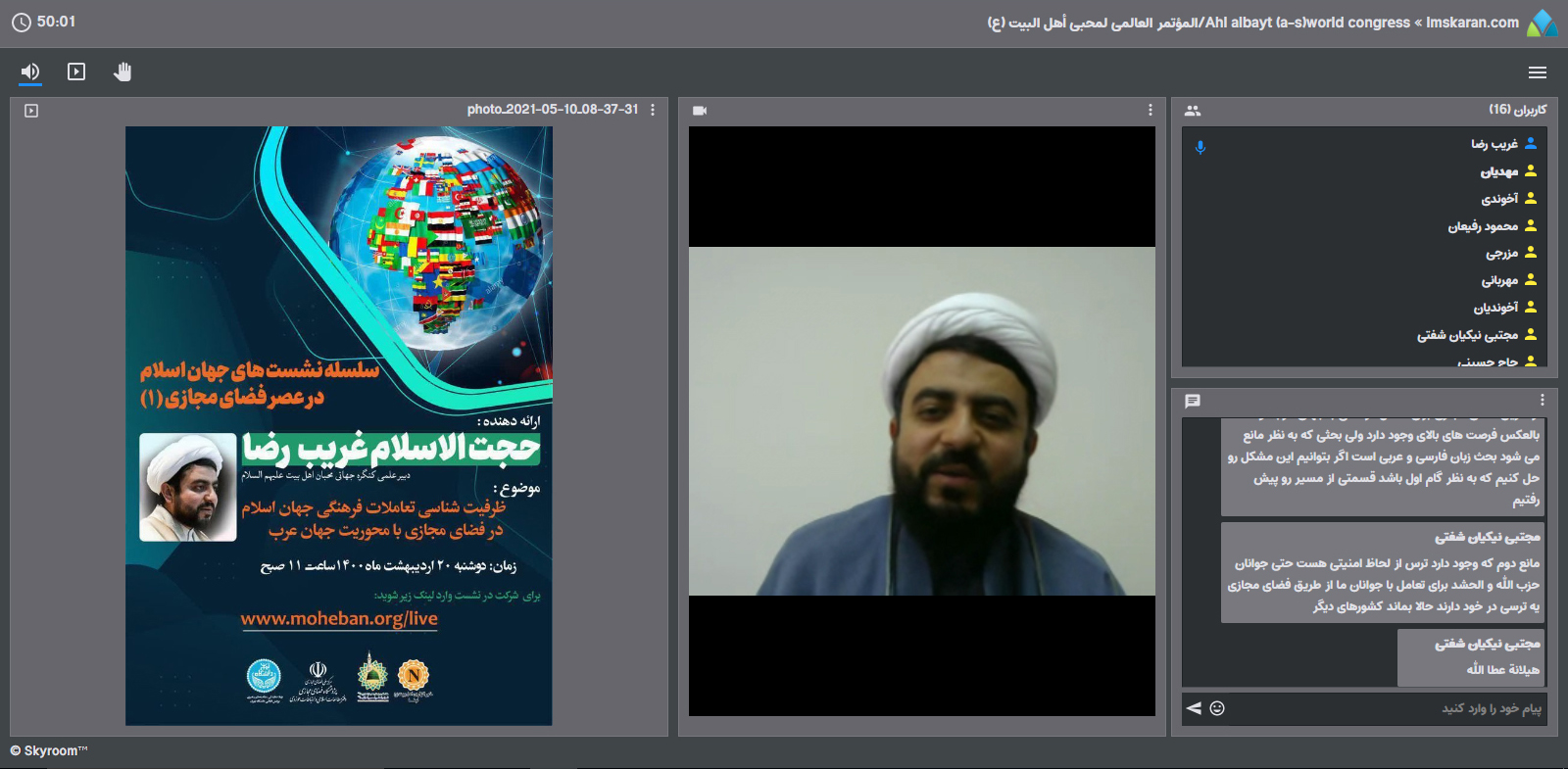
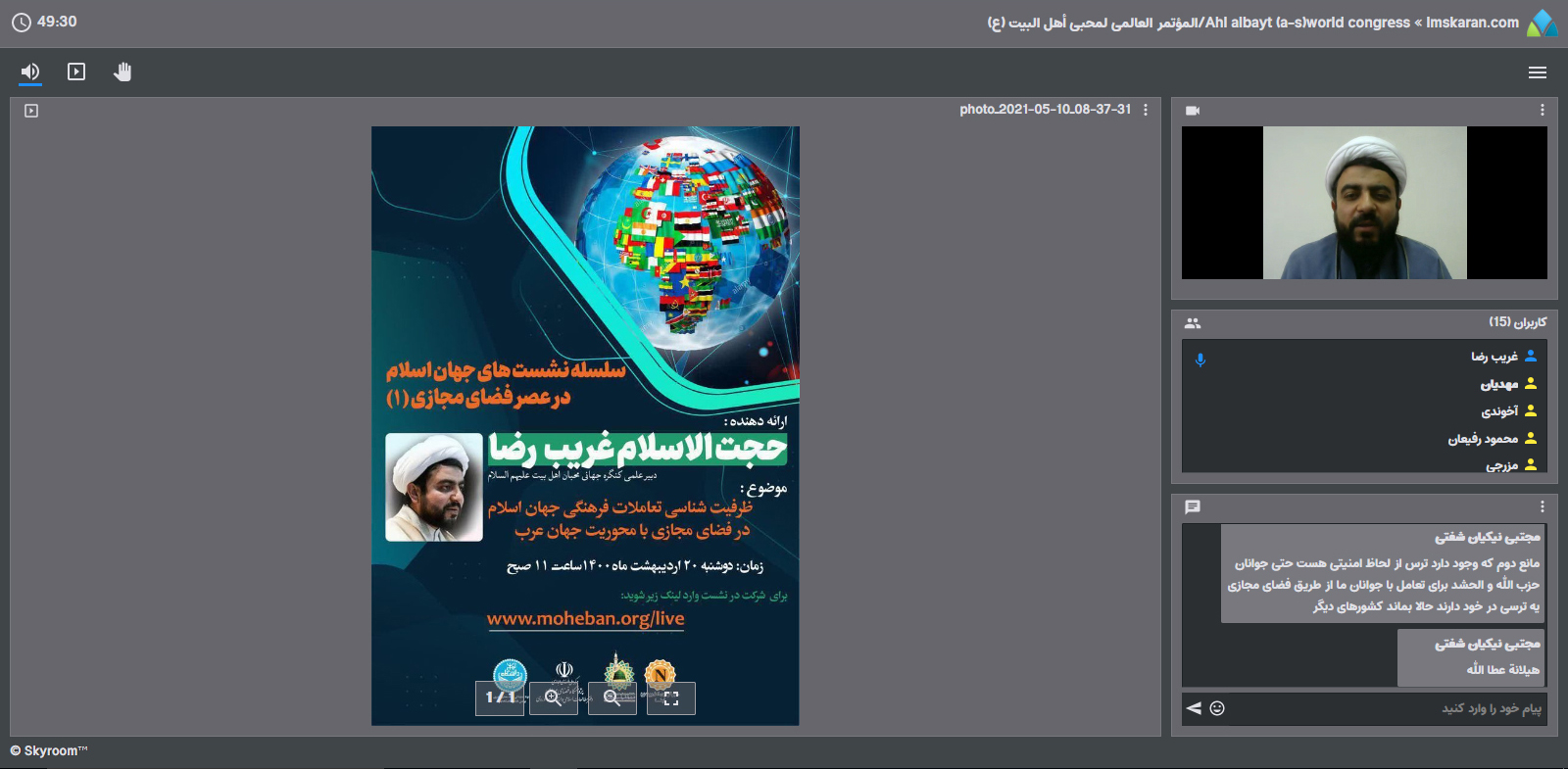
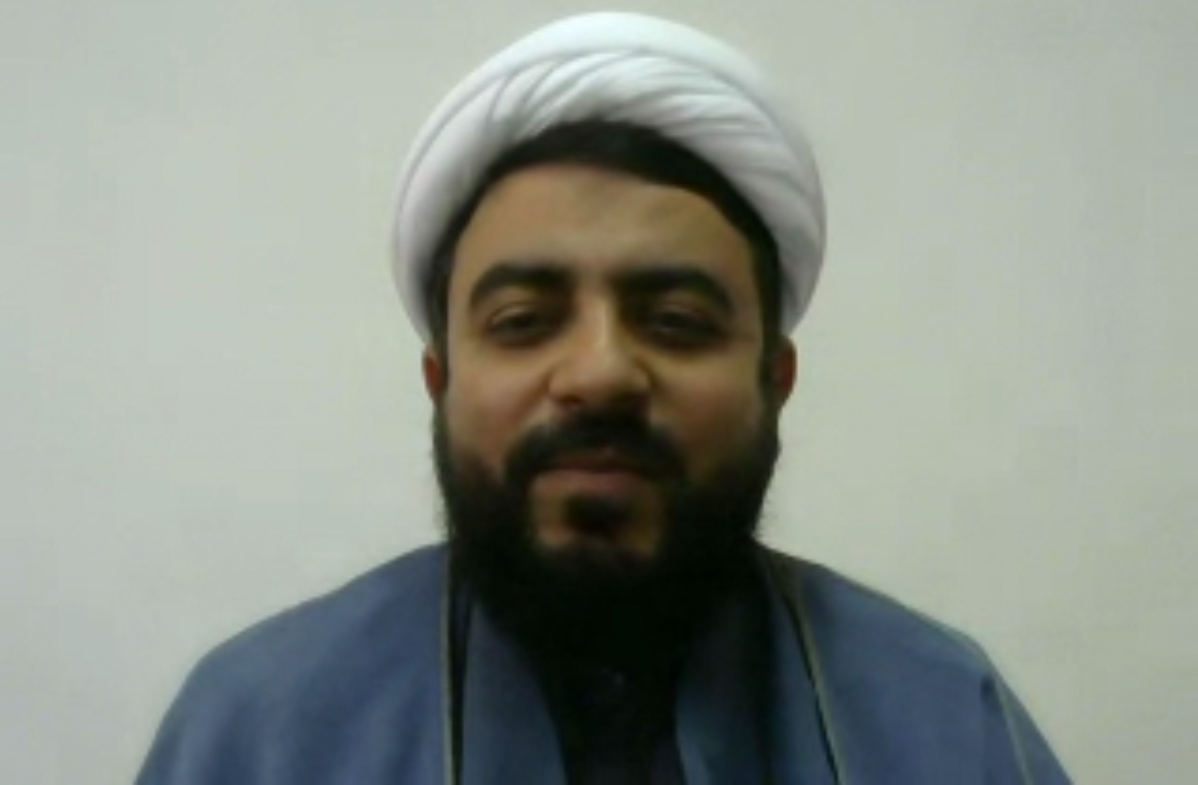
The webinar “Capacity Studies of Cultural Interactions of the Islamic World in Cyberspace with a Focus on the Arab World” was held with the presence of Hojat al-Islam Gharib Reza.
The first meeting of the series of scientific meetings of the Islamic world in the era of cyberspace with the topic “Capacity Studies of cultural interactions of the Islamic world in cyberspace with a focus on the Arab world” was held with the presence of Hojat al-Islam Gharib Reza, by the initiation of International Unit of the Office of Islamic Studies in Cyberspace, in collaboration with the Worldwide Conference on Lovers of AhlulBayt (a.s.), the AhlulBayt (a.s.) News Agency, and the Representation of the Supreme Leader on Farabi Campus - University of Tehran.
At the beginning of the meeting, the scientific secretary of the Worldwide Conference on Lovers of AhlulBayt (a.s.) said that one of the problems in the field of cultural relations between Iran and the Arab world is the lack of a proper cultural bridge between the two. He said that the solution to the problem is to create an organization to train experts to promote the discourse, change the thinking, mentality, and spiritual interests of Arab users.
He added that in the field of cyberspace, people who have three characteristics are needed:
1. A person who is a religious preacher;
2. Someone who is considered a desirable intellectual element;
3. Someone who has the skills to use cyberspace.
Following in the meeting, Hojat al-Islam Gharib Reza examined the civilization capacity of the Arab world and pointed to two periods of Islamic movements of the past:
1. Self-return movement: One of the leaders of this movement is Sayed Jamaluddin Asadabadi. He worked hard to make Muslims aware of their inner capacities, and to use them for growth and development.
2. Contemporary Islamic movements: In addition to the characteristic of returning to themselves, and relying on the capacities of Islamic education, these movements have also taken steps towards political structuring. For example, we can mention the leadership of the Muslim Brotherhood and Hizb ut-Tahrir to achieve these goals.
Citing an article by the Supreme Leader of the Revolution, Gharib Reza pointed to the high capacity of civilization in the Arab world and said, “The Supreme Leader in his book “Sharh Esm” writes, “I used the book of Malik Ibn Nabi to write the Islamic Manifesto of Government and Civilization.” This means that he, after reading Malik ibn Nabi”s book in full, used the capacity of this book, and then explained the 5 steps to explain Islamic civilization. Of course, it must be said that the field experience of the Supreme Leader, during and after the revolution, played an important role in explaining the structure of Islamic civilization.”
Gharib Reza, head of the Institute for Religious Dialogue for Unity, attributes the rejection of the Islamic Revolution by the Arab world to two factors:
3. Sensitivity of the people of the region to “Export of Revolution”: The emphasis of some people on the need for “exporting the revolution” has aroused the sensitivity of some people in the region, and made them feel that the Islamic Republic is seeking cultural and religious domination over the Arab world. However, the Supreme Leader of the Revolution has emphasized, “We issued the revolution with the 1979 revolution itself, and the revolutionary movement of Imam Khomeini was the best way to export the revolution.”
4. Lack of properly explaining the history, characters, damage, and intellectual foundations of the Islamic Revolution to Arabs living in the region: If these issues are properly explained to the audience, they will definitely accept it better. For example, we can refer to the translation of the books of the Holy Defense (Iraq-Iran imposed war) into Arabic to explain the character of the martyrs, the Holy Defense, and the original Islamic values for the audiences of Iraq and Lebanon. These translations have influenced the new generation of Iraqi and Lebanese youth. So much so that even the families of those killed in the Iran-Iraq war have become interested in this material. Measures in this area have been limited.
Finally, assessing the potential of the Arab world to create discourse and stream, he made six points:
1. Common Islamic occasions among Muslims, such as Hajj, Arbaeen, and the publication of books related to the Imams (a.s.) on the anniversary of the birth or martyrdom of the Imams (a.s.). These occasions are the best platform for the exchange of common knowledge between different Islamic denominations. Of course, it should be noted that in expressing knowledge, the specific expression of Shiite-specific content should be avoided. Because it causes stance and rejection. Expressing commonalities, which are many, is the best way;
2. Sunni Sufism; Unfortunately, this issue has been neglected so far. The reason for the importance of this issue is their mystical-political aspect. Those who were present in Tunisia and Libya, in addition to the mystical method, also made politics a part of their lives and plans. Muslim’s negligence of this sect led Western politicians in the contemporary world to exploit Muslim neglect of politics to create Wahhabism and ISIL in the political arena. While Shiites and Sufis have a close relationship with each other and it was possible to use this capacity favorably. The important point to note here is that the Shiite view of Sufi scholars such as Ibn Arabi must be corrected. Many of Ibn Arabi’s followers have become Shiites by correctly explaining his beliefs. This is a good capacity for making a stream. Because all Sufi activists have websites, pages and are active in the social network;
3. The capacity of Mustabserin (those who have recently converted to Shia); Unfortunately, by neglecting the enlightenment and correct explanation of the Imamiyyah Shia beliefs, people who have recently converted to Shia have tended to deviant Shia currents such as Al-Lahiari and Shirazi;
4. Political currents; Like the supporters of former Egyptian President Gamal Abdel Nasser, and the Muslim communists who have a communist view in their political and economic struggle but are committed to prayer and fasting. This stream can also be used favorably;
5. Religious modernism (religious liberalism); Of course, we must be careful not to cross our religious red lines. There are books on the critique of pluralism, hermeneutics, and the historicity of religion that provide a good platform for expressing Shiite views and educating Arabic-speaking audiences;
6. The capacity of public culture. This capacity does not arouse any religious sensitivities. These include the use of art in music, filmmaking, and cooking.



